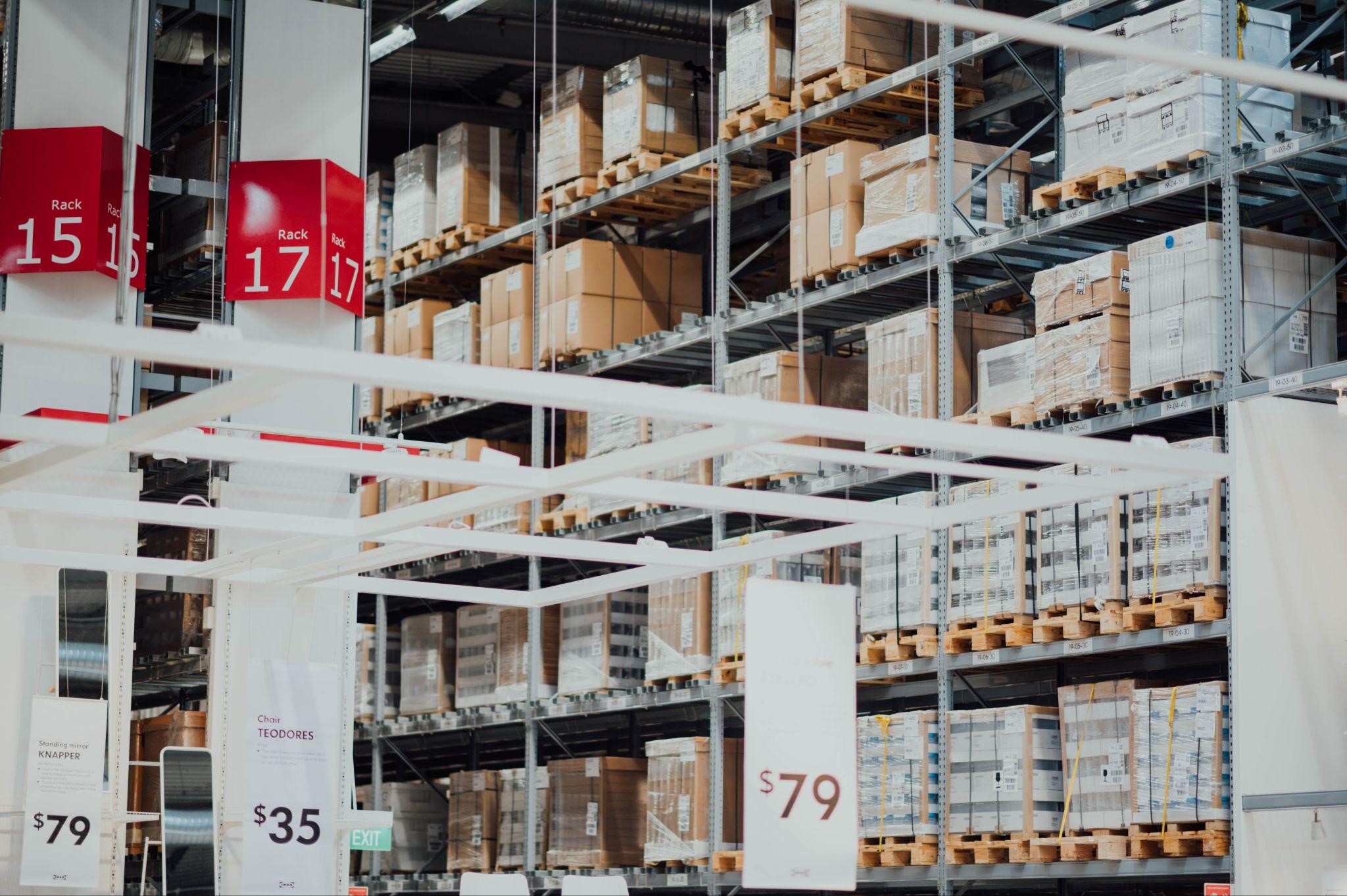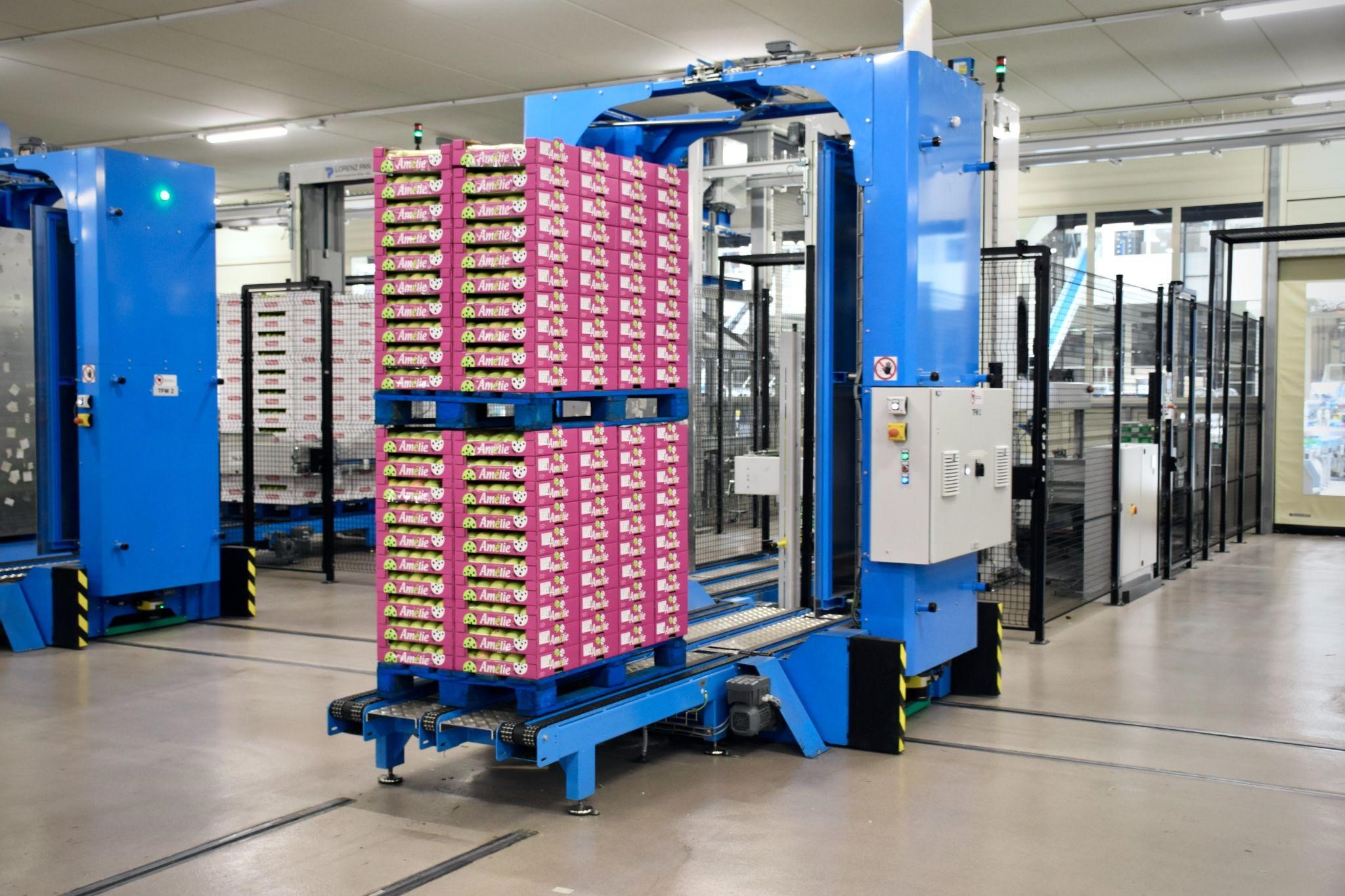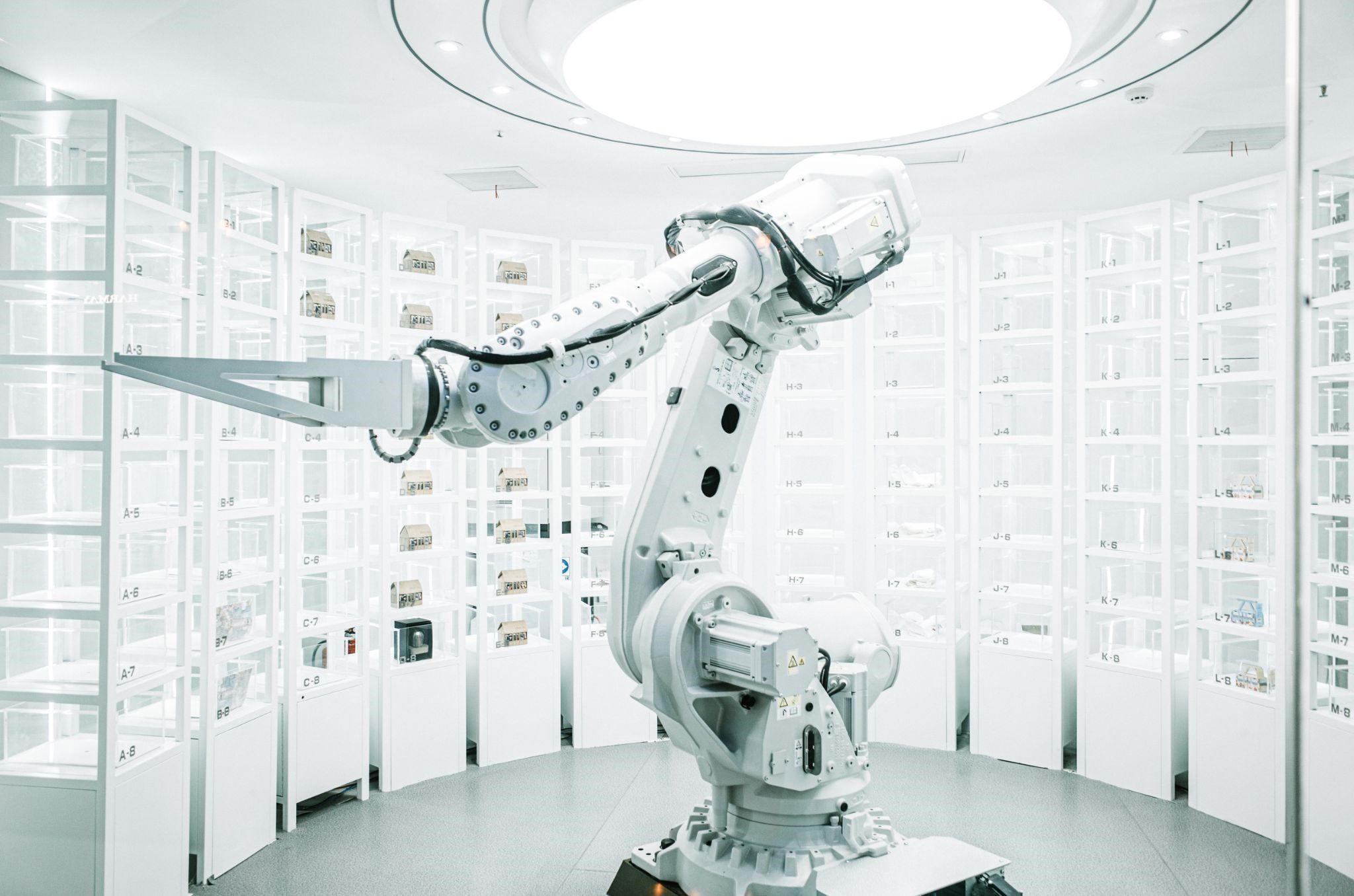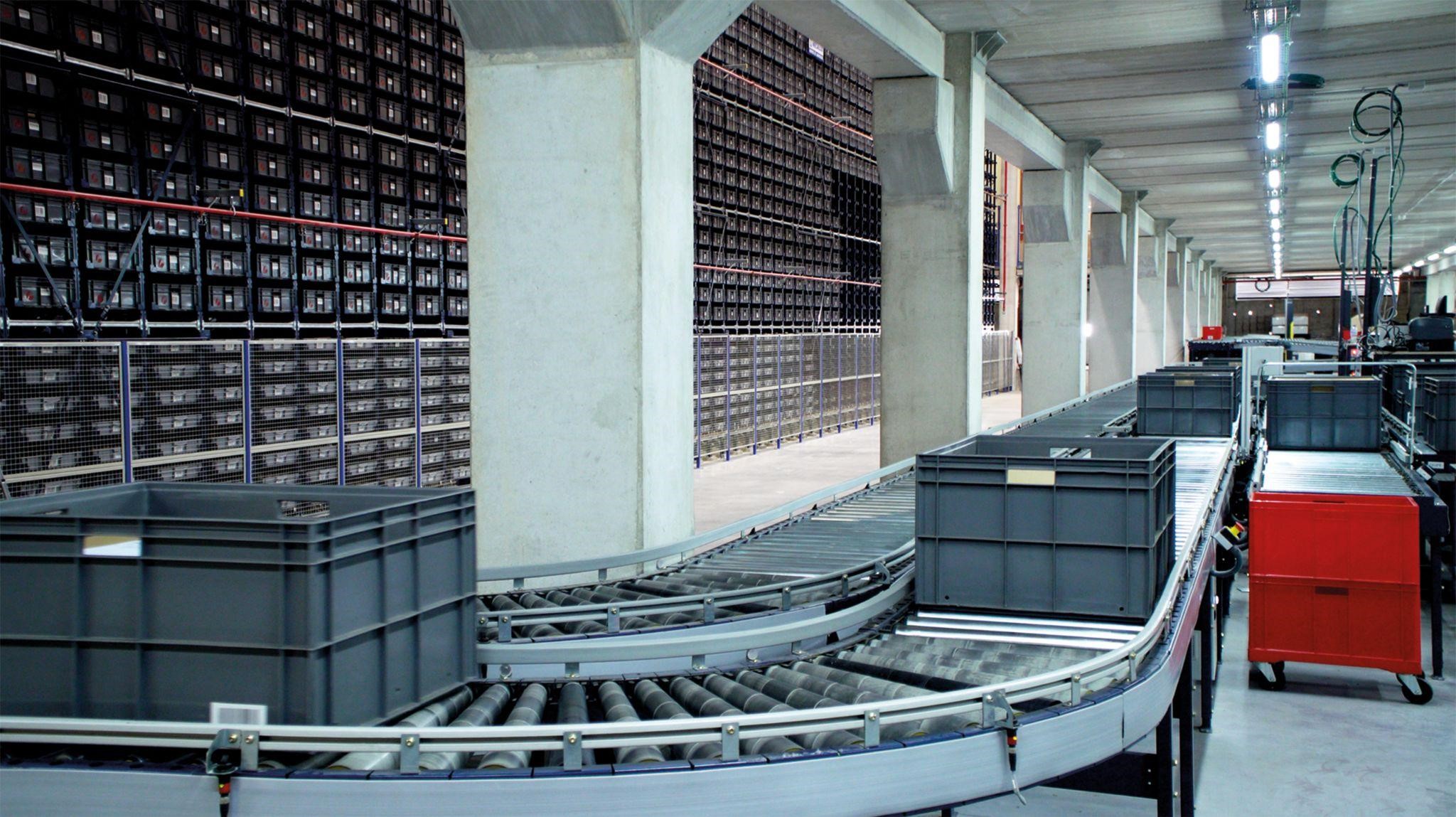are reading this article, you probably have the above thoughts. This article provides a detailed and easy-to-understand explanation of the advantages and disadvantages of automating warehouse operations, as well as the elemental technologies used for automation. We also introduce the latest trends in warehouse automation and case studies of successful companies with warehouse automation, so please read until the end.
Table of contents
- What is warehouse automation?
- Benefits of warehouse automation
- Improving work productivity
- Reduce labor costs
- Stabilization of operations
- Makes it easier to understand the actual business situation
- Disadvantages of warehouse automation
- Installation and maintenance are costly
- It takes time to get used to it
- Business procedures and systems need to be reviewed
- Measures against malfunctions and security risks
- Technologies used in warehouse automation
- Warehouse management system (WMS)
- automatic transfer robot
- RFID (barcode)
- big data
- IoT
- Latest trends in warehouse automation
- Emergence of new technology due to evolution of IT technology
- Rising need for human safety
- Labor shortage increases momentum towards automation
- Examples of warehouse automation
- Amazon
- Yamato Transport
- fast retailing
- IKEA
- summary
What is warehouse automation?

Warehouse automation refers to efforts to automate and improve efficiency of operations performed in warehouses. The purpose is to improve the accuracy, efficiency, and productivity of warehouse operations and reduce the amount of work performed by employees.
The background to automating warehouse operations is as follows.
- As the shortage of human resources continues to grow, more and more companies are considering leaving warehouse tasks to machines and robots.
- As the number of packages to be delivered increases, the number of packages stored in warehouses is also increasing.
- Customer requests are becoming more sophisticated, such as “I want early delivery” and “I want delivery between 10 a.m. and 11 a.m.”
- Technologies that can automate warehouse operations are being developed one after another.
As described above, warehouse automation is now in place, and the demand for automating warehouse operations is increasing.
Benefits of warehouse automation

There are four major benefits of automating warehouse operations.
- Improving work productivity
- Reduce labor costs
- Stabilization of operations
- Makes it easier to understand the actual business situation
This chapter provides a detailed explanation of the benefits of automating warehouse operations.
Improving work productivity
Automating warehouse operations will improve business productivity. Factors that improve productivity include speeding up work and improving accuracy through automation.
Let’s take picking, which is part of warehouse operations, as an example. Picking is the process by which employees select items stored in the warehouse and prepare them for transport to the next process. By using picking robots, picking operations are automated, making it possible to quickly and accurately sort and package products.
Automating warehouse operations has the advantage of increasing the amount of work that can be done in the same amount of time, reducing errors, and improving work safety and customer satisfaction.
Reduce labor costs
Automating warehouse operations has the advantage of reducing the labor costs required for warehouse operations. Automation eliminates the need for employees, making it possible to reduce the number of people assigned to warehouse operations. Reducing the number of people assigned to warehouse operations will also reduce the cost of training warehouse employees.
Additionally, unlike employees, machines have the advantage of being able to operate 24 hours a day.
In this way, automation of warehouse operations reduces the labor costs required for warehouse operations. Also, from a company-wide perspective, it is possible to reassign employees to tasks that require more manpower, such as delivery, manufacturing, and sales.
Stabilization of operations
Automating warehouse operations has the advantage of stabilizing operational quality. This is because automated work basically performs work with the same level of efficiency and quality, and produces the same level of output.
On the other hand, when the same employee (human being) is working, the degree of work will vary depending on concentration, experience, fatigue, etc. The possibility of so-called human error occurring is unavoidable.
In addition, by automating business operations, it will be easier to obtain hints for stabilizing business operations. This is because it is possible to grasp the rules for success through digitization and AI (artificial intelligence) learning. Automating warehouse operations will make it easier to stabilize operations.
Makes it easier to understand the actual business situation
Automating warehouse operations has the advantage of making it easier to understand the actual status of operations. This is because by using an automation system that has the ability to collect work data in real time, the actual business status can be visualized.
Traditionally, understanding business conditions involves rules of thumb and simple visual inspection. As these standards are vague, the actual situation may differ depending on the person confirming or reporting. By introducing an automated system into warehouse operations and visualizing them with numbers, graphs, and tables, it is possible to understand the actual status of operations more specifically.
Examples of things that can be visualized in warehouse operations include:
- Stock status
- product quality
- Work progress
- employee attendance
- performance
By introducing an automation system to warehouse operations, you will be able to concretely grasp the actual status of operations. If you can identify points for improvement by understanding the actual business conditions, you will be able to take steps to further improve operational efficiency.
Disadvantages of warehouse automation

Automating warehouse operations has both advantages and disadvantages. It is important to be aware of the disadvantages before implementing it. This chapter provides a detailed introduction to four disadvantages of automating warehouse operations.
- Installation and maintenance are costly
- It takes time to get used to it
- Business procedures and systems need to be reviewed
- Measures against malfunctions and security risks
Installation and maintenance are costly
Automating warehouse operations has the disadvantage of high system installation and maintenance costs.
In order to automate, you will need to develop your own automation system or introduce an automation system from another company. Initial costs include either development costs or implementation costs.
Also, once you start using the system, you need to maintain its performance. Therefore, you must also consider maintenance and update costs. Be careful when choosing and developing a system, as it will be a wasted effort unless the benefits outweigh the costs.
It takes time to get used to it
Another disadvantage is that it takes time to get used to using automated systems.
Each automation system has its own uses. If you can’t use it correctly, you won’t get any benefits and your work load will increase.
When implementing an automation system, keep in mind that it will take some time to get used to it. We also recommend installing a system that comes with easy-to-understand installation, operation instructions, and support that will shorten the time it takes to get used to using it.
Business procedures and systems need to be reviewed
Automating warehouse operations also has the disadvantage of requiring a review of business procedures and systems.
For example, let’s consider a case where you want to automate only a part of a series of tasks.
In that case, it is necessary to review the work procedures before and after. Develop procedures to maximize the benefits of automation.
Automation also allows employees to perform other tasks by reducing the number of steps they have to perform. Consider flexible relocation.
Measures against malfunctions and security risks
Automating warehouse operations requires measures against system failures and security risks.
Automated systems are subject to failure. When an automated system breaks down, you must take manual steps until the system is restored. Make sure you have a system and structure in place that will cover you in case something happens.
In addition, taking into account the security risks of automated systems, it is essential to take measures for backup, data distribution, and system maintenance. Keep in mind that these measures come at a cost.
Technologies used in warehouse automation

The five main technologies used for warehouse automation are listed below.
- Warehouse management system (WMS)
- automatic transfer robot
- RFID (barcode)
- big data
- IoT
Let’s take a closer look at each technology.
Warehouse management system (WMS)
A warehouse management system (WMS) is a system that allows you to visualize the work flow and inventory status in a warehouse. Work flows that can be visualized include orders, order placement operations, and instructions for picking positions, making it easier to prevent losses due to omissions in employee tasks and over- and under-ordering.
In addition, by linking with other systems, it is possible to manage inventory and free space, and analyze data for more efficient warehouse operations.
There are many technologies for automating warehouse operations, but warehouse management systems can be said to be central.
automatic transfer robot
Automatic transport robots are robots that can pick packages and products in a warehouse, move them around the warehouse, and transport them. For employees to move around with luggage in a warehouse is a physically taxing task that can easily lead to injury. By using automatic transfer robots, the risk of injury is reduced.
Additionally, by linking it with a warehouse management system, the burden on employees will be further reduced and warehouse operations will be more efficient.
RFID (barcode)
RFID (Radio-Frequency Identification) is a technology that uses wireless communication in electronic tags. To use RFID technology, an RFID tag is attached to a product or item. The system records the time and work history by identifying and reading information from the RDIF tag using a reader or antenna.
RFID can be read faster than barcodes and is used for inventory management and product tracking in warehouses. Analysis of the collected data can provide insights into more efficient warehouse operations.
big data
Big data is a technology that extracts valuable information and trends from vast amounts of data. In warehouse operations, the aforementioned robots and RDIF technology accumulate data such as inventory data, order data, transportation time, and robot position information.
However, just accumulating data is meaningless. By utilizing big data analysis on accumulated data, it becomes easier to obtain hints for more efficient warehouse operations, such as optimizing inventory, forecasting demand, and improving work efficiency. When considering data collection, analysis, and utilization as a set, big data is an indispensable technology for automating warehouse operations.
IoT
IoT (Internet of Things) is a technology in which devices and sensors communicate via the Internet to collect and share data. Examples of IoT use cases in warehouse operations include monitoring inventory using sensors, controlling automated transport robots, and monitoring temperature and humidity. IoT enables real-time monitoring of cargo, robots, and sorting status in warehouse operations.
Data accumulated through IoT can also lead to more efficient insights from big data analysis.
Latest trends in warehouse automation

The latest trends in warehouse automation are one of the things you need to know when implementing warehouse automation. The latest trends in warehouse automation introduced in this chapter are: (As of September 2023)
- Emergence of new technology due to evolution of IT technology
- Rising need for human safety
- Labor shortage increases momentum towards automation
Emergence of new technology due to evolution of IT technology
With the evolution of IT technology, new technologies are emerging that are having a major impact on the automation of warehouse operations. For example, AI, machine learning, and deep learning will be used to improve operational efficiency in warehouses. In the future, it is highly likely that AI will be incorporated into each of the technologies explained in “Technologies used for warehouse automation” and aim for further automation and efficiency.
Conversely, if you are late in automating your warehouse operations, you will not be able to benefit from new technology. The gap in operational efficiency between companies that have adopted automated systems will widen further. In the world of DX, the gap between companies that adopt new technology and those that do not is also referred to as the “2025 Wall” (see article on DX ) .
Let’s work on introducing automation systems little by little so that we don’t miss out on the trends.
Rising need for human safety
The trend of warehouse automation is increasing the need for employee safety on the job site. When warehouse work is performed by humans, there is a risk of injury as the work involves handling heavy loads or items placed at high places. Looking at the ” Occupational Accident Occurrence Status in the Warehousing Industry (1999-2021) ” compiled by the Central Industrial Accident Prevention Association , accidents such as falls, collisions, and falls are occurring even in 2021, and it is difficult to ensure safety. This is a traditional issue.
Automated systems increase safety in collaborative environments and reduce the risk of accidents and injuries. When implementing automated systems, emphasis should be placed on safety measures and the implementation of sensor technology.
Labor shortage increases momentum towards automation
A trend in the warehousing industry is that labor shortages are increasing the momentum for automating warehouse operations. Japan is experiencing a declining birthrate and aging population, and the warehousing market is also experiencing a labor shortage trend. In a survey conducted by Fuji Electric in 2021 on the labor shortage in the logistics and warehousing sector, 65% of respondents answered that they “do not have enough manpower” when asked about the shortage of manpower (human resources) in the logistics and warehousing sector. .
If there is a shortage of manpower, the only option is to improve efficiency or increase manpower. As manpower is not expected to increase due to the declining birthrate and aging population, automation can be said to be essential.
Examples of warehouse automation

This chapter introduces four cases of successful warehouse automation. Knowing the success stories will help you when implementing warehouse automation at your company.
- Amazon
- Yamato Transport
- fast retailing
- IKEA
Amazon
Amazon has developed and introduced the automatic transport robot “Amazon Robotics Kiva” to automate its warehouse industry. Kiva robots automatically move around the warehouse and carry the shelves themselves, so employees can now simply move items in and out of the shelves.
In the past, one of the issues when using automated transport robots was that due to variations in the size and weight of packages, the robots could not move uniformly, resulting in robots colliding with each other. Since Kiva moves the entire shelf, the size and weight of the package are fixed. This allows the robot’s movement to be constant and stable.
In addition, employees only take out the necessary items from the shelves brought by Kiva, so they do not have to walk around the warehouse, increasing safety.
Yamato Transport
In 2019, Yamato Transport introduced the logistics support robot “Carillo” to automate warehouse operations. Carrillo is an automatic transport robot that is easy to set and change the transport route, and is easy to operate for the workers who use it.
The company noticed that transporting items by employees is dangerous, and that employees often return home empty-handed after transporting items. As a result of using Carriro for automatic transport, we have achieved significant labor savings and increased efficiency. In addition, the transport routes are now fixed, work lines are clearer, and employees can now work more safely.
In the future, we are working to further save labor and expand implementation at each site.
fast retailing
Fast Retailing has introduced EXOTIC’s Skypod robot to automate its warehouse operations. The Skypod robot is an automatic transport robot that can move freely throughout the warehouse. In addition to moving on a plane, it can also pick items at a height of 12 meters. This makes it possible to store products in spaces that were previously underutilized.
Fast Retailing is expanding both its store sales and online shop sales, and its warehouse operations are increasing proportionately. However, the lack of human resources is difficult to resolve, so we decided to introduce warehouse automation to improve operational efficiency. This is because the Skypod robot, which maintains high performance and is highly flexible, fits the company’s warehouse style.
In the future, companies like Fast Retailing will continue to introduce advanced robots for warehouse operations.
IKEA
IKEA successfully automated its Tokyo-Bay warehouse, increasing work efficiency by eight times. We have introduced AutoStore, an automated warehouse-type picking system.
Autostore is a system in which when an order is placed, a robot automatically picks up the product from an automated warehouse and delivers it to the customer. Compared to the traditional method of having store staff move around the store or warehouse, this method is significantly more efficient. The introduction of the Auto Store not only made transportation work more efficient, but also reduced the physical burden on employees.
After introducing AutoStore, we are using the time freed up by automating warehouse operations to support customer shopping, and are working to ensure that customers have a more satisfying shopping experience.
summary

In this article, we introduced an overview of warehouse automation, its advantages and disadvantages, and the technologies used.
Automation of warehouse operations is essential in response to the shortage of human resources and the advancement of technological innovation. We have learned from case studies that many companies often start with the introduction of automatic loading robots as part of automation.
In the future, it is highly likely that technologies such as warehouse management systems and automated transport robots will be further incorporated. Let’s keep up with the trends, automate warehouse operations, and reallocate human resources so that they can devote time and effort to sales and development.



